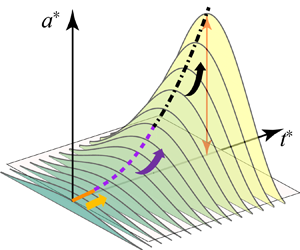Article contents
Shock-induced interfacial instabilities of granular media
Published online by Cambridge University Press: 11 November 2021
Abstract

This paper investigates the shock-induced instability of the interfaces between gases and dense granular media with finite length via the coarse-grained compressible computational fluid dynamics–discrete parcel method. Despite generating a typical spike-bubble structure reminiscent of the Richtmyer–Meshkov instability (RMI), the shock-driven granular instability (SDGI) is governed by fundamentally different mechanisms. Unlike the RMI arising from baroclinic vorticity deposition on the interface, the SDGI is closely associated with the interfacial and bulk granular dynamics, which evolve with the transient coupling between particles and gases. Consequently, the SDGI follows a growth law distinctly different from that of the RMI, namely a semilinear slow regime followed by an exponentially expedited regime and a quadratic asymptotic regime. We further establish the instability criteria of the SDGI for granular media with infinite and finite lengths, which do not exist in the RMI. A scaling growth law of the SDGI for dense granular media with finite length is derived by normalizing the time with the rarefaction propagation time, which successfully collapses the data from cases with varying shock strength, particle column length and particle volume fraction and ought to hold for granular media with varying particle parameters. The effect of the initial perturbation magnitude can be properly considered in the scaling growth law by incorporating it into the length normalization.
Information
- Type
- JFM Papers
- Information
- Copyright
- © The Author(s), 2021. Published by Cambridge University Press
References
- 10
- Cited by


